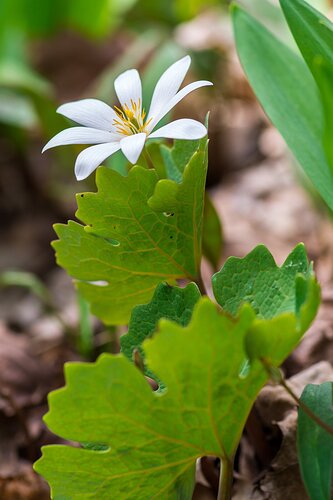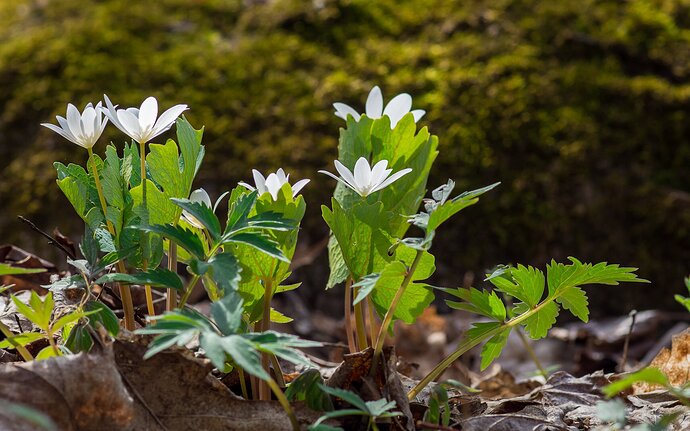Winter is a pretty dull place here in the Flora category, so I thought I’d go through the archives for some of my favorite photos. Please feel free to do the same.
Bloodroot (Sanguinaria canadensis) is a delicate spring ephemeral that in years past was my nemesis. A few replies down you can read about why here.
One of the things that makes these so challenging to photograph is that they are a single stem with a single flower and a single leaf, but oh those leaves! These two shots were done in 2017 before I started focus stacking and so there is some compromise on what’s in focus and what isn’t, but the leaves just knock me out. The petals are so lightly attached that very slight breezes will cause them to fall off. Pollinators do it, too. Once I accidentally brushed one while setting up and totally ruined my shot when the petals broke away and floated to the ground. Now I approach with caution.
It gets its name because the plant and especially the roots produce a liquid that has been used as a dye by Native Americans. As you’d imagine it’s a deep, blood red. It also produces Sanguinarine which is a toxin that can cause death by interfering with or blocking transmembrane proteins in cell structures. Getting any on your skin is not a good idea and there are no established medical uses for the substance. Who knows how it was safely made into a dye, but there must be some way.
They sure are gorgeous though and I look forward to their coming every spring.
Specific Feedback Requested
Open to new field techniques and ideas for processing. Come April, these will be up again and they’re all over the yard and surrounding woods.
Technical Details
Is this a composite: No
Tripod and possibly a CPL
Both taken with the GH-3 and the legacy OM 90mm f/2 macro
ISO 160
1/80 sec for larger view, 1/250 for narrower
Probably f/5.6 or 8 for both as well

